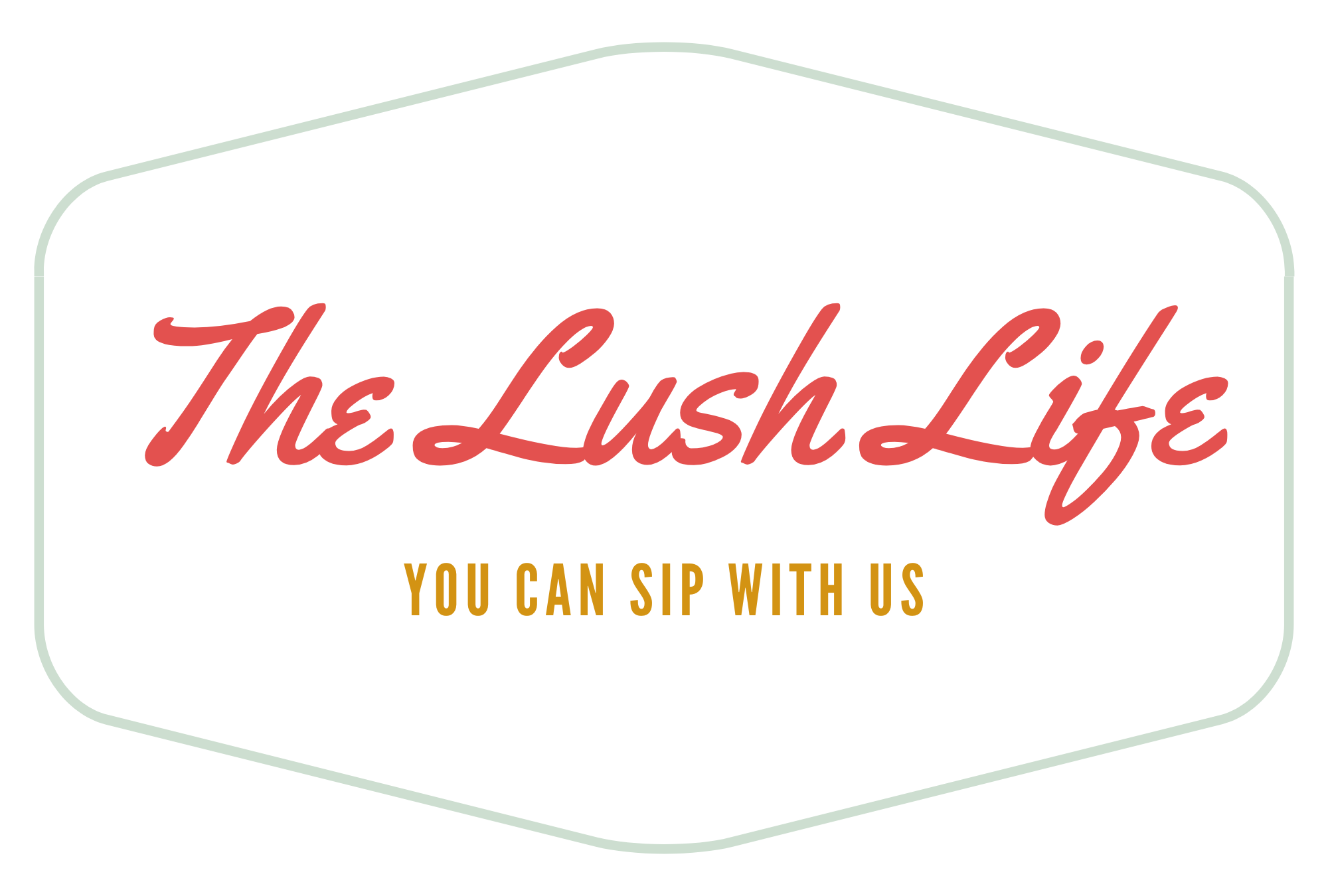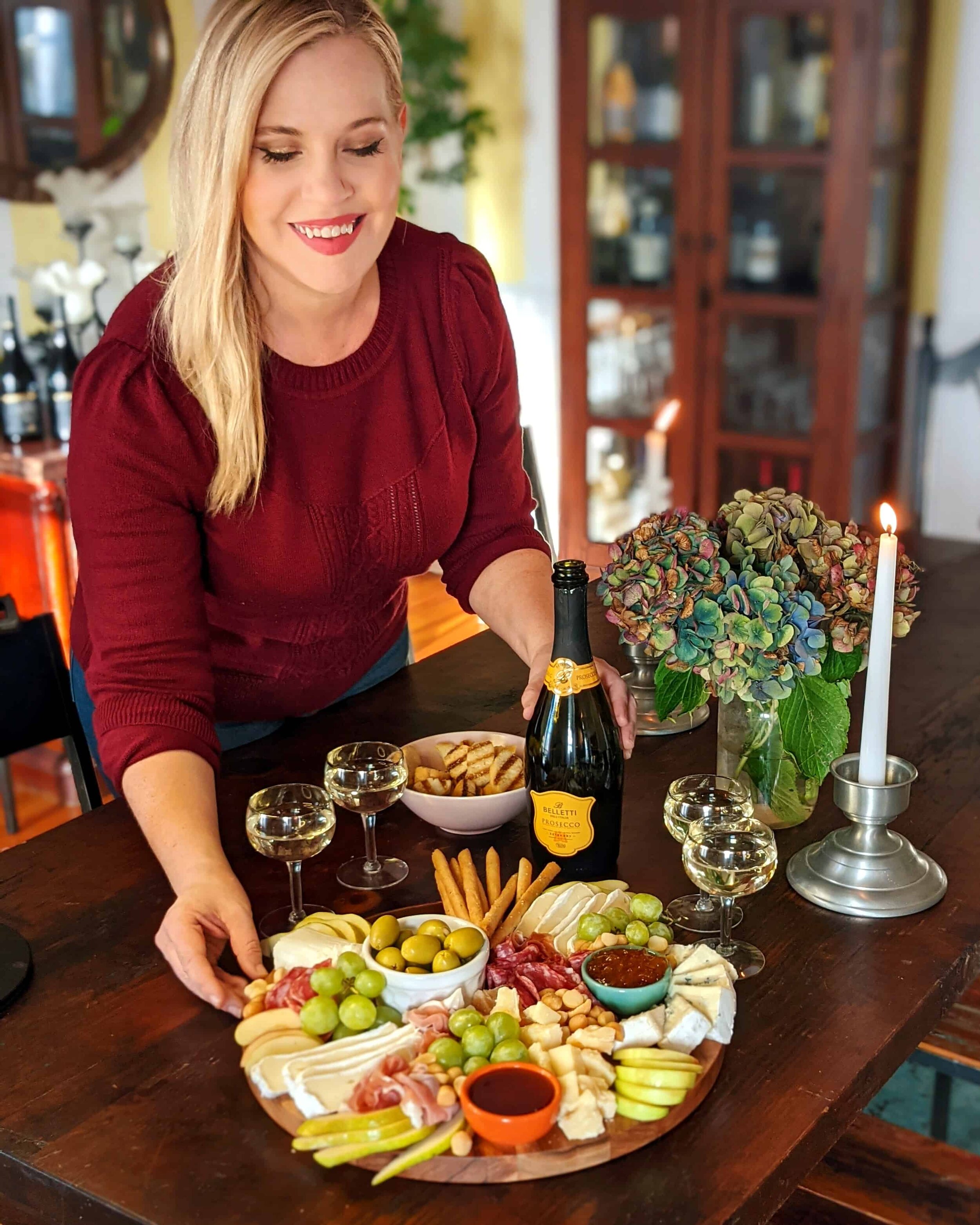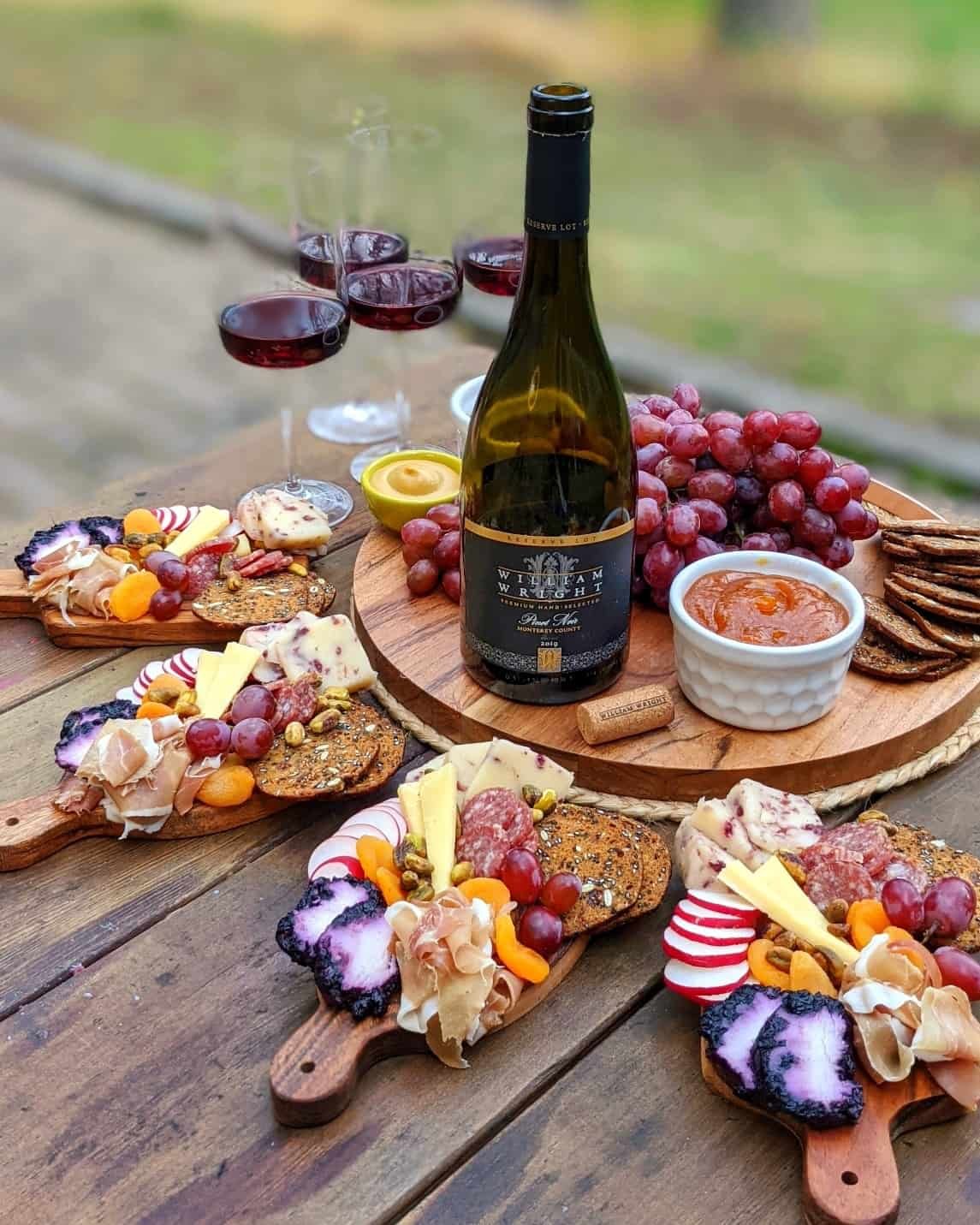The Best Wine with a Charcuterie Board
If having friends over for dinner or drinks stresses you out, say hello to you new hosting secret weapon: the charcuterie board! A charcuterie spread is one of my favorite ways to host: it's always a crowd-pleaser; you can set it, forget it, and spend your time catching up with your friends instead of being chained to the stove all night. Add in a wine tasting? EPIC!
As someone who loves to chat and snack (I'm definitely a 'drinks-and-apps' kinda gal), I'll admit there's really no way to go wrong here. But, as a wine expert, I will tell you that not just any glass of wine will be a great match for what's on your board. You want to pick the right wines for the specific charcuterie board items you've picked out, and there's definitely a strategy for picking out the best wine pairing. And that's where I come in! I love using all the skills I've learned as a professional sommelier to help you create fantastic wine nights at home.
An amazing charcuterie board, paired with the perfect wine, is a next-level happy hour in my book-- and it's so easy to put together! (And if you’re intimidated by the picture-perfect boards all over Instagram, don’t worry: I’m going teach you step-by-step how to make a beautiful one, and it doesn’t have to be perfect! )
This board was inspired by Sauternes, a famous sweet wine from Bordeaux. France.
Charcuterie Board Tips
Before we get to the wine pairings, let's talk about what makes the perfect charcuterie board-- and the best way to assemble one.
How much cheese, meat, and wine to buy:
Before you head to the grocery store, wine shop, or gourmet market, you'll want to plan the amount of cheeses, meats, and wine you'll need. This will depend on the number of people eating and sipping! A good rule of thumb regarding your cheeses: you'll want about 1 oz. of each cheese per person. The same goes for your meats.
Think about your group: are they hearty eaters or just the type to nibble and graze? Will other food be available, or will the charcuterie platter be the main attraction? Adjust your quantities depending on the answers to these questions.
As for the wine: if you plan to hang out for 3 hours or more, plan on one bottle of wine per person. This may sound like a lot to some of you! But generally, your guests will drink two glasses of wine in the first hour and one glass per hour afterward. A bottle of wine holds four and a half glasses, so this formula is solid. I'd always rather have more wine available than not enough, but you can decrease your wine quantity if you're just planning on a quick gathering before dinner or a short meet-up.
When to build your charcuterie board:
One of the best things about a charcuterie board and wine night is being able to prepare everything ahead of time. Pro tip: meats and cheese are most flavorful at room temperature. I like to assemble my board about 45-60 minutes before serving it. Cheeses and meats are easier to cut when they're cold, so I prep them fresh out of the refrigerator as I build my board, but once it's assembled, I definitely let it warm up a bit before my guests come over.
How To Make a Charcuterie Board (7 Steps to Get it Right Every Time)
Here's the formula I use to assemble a charcuterie board at home!
Step 1: Decide which board to use
Make sure you have an excellent foundation to start with! Clearly, all of the delicious things that go on your board are the star of the show-- but there's no denying that the style of the board itself will create a certain vibe. A natural wooden board can give a rustic feel-- just make sure it's food safe. If I go for a more polished, elegant aesthetic, I'll use a marble platter. Slate boards can bring a rich texture, and I love them for giving a more industrial, 'urban wine bar' feel. But if you don't have an array of serving platters and boards to choose from, don't worry: one of my favorite charcuterie spreads I've ever made was created on a big slab of butcher paper rolled across a countertop. So, don't overthink this step.
Step 2: Put down small bowls for your condiments
Even though the meats and cheeses are the features here, your condiments and accompaniments should get placed on the board first, and everything else will be positioned around them. You can use pinch bowls or ramekins-- and a food stylist secret I've learned over the years: odd numbers are more pleasing to the eye! So choose 3, 5, or 7 different accompaniments. Here are some of the essentials:
Something sweet: Honey is incredible when drizzled over cheeses to contrast their salty and savory qualities, and there are so many wonderful options (this guide is fantastic.) Wildflower honey, lavender honey, acacia honey- the list goes on. You can even find artisan honey infused with rosemary or spicy chiles. Jellies and jams are also indispensable as a sweet condiment: strawberry preserves are excellent with alpine-style cheeses, while apricot jam is lovely with blue cheese. Fig spread and brie is one of the world's best cheese pairings!
Something bright and lively: cornichons perk up your palate with their bracing acidity that will balance out the richness of cheese and meat. Pickled onions or capers will also serve the same function. Also, look for savory farmhouse chutneys and balsamic onion confit.
Mustards: these are an excellent accompaniment to cured meats. You can seek out flavored mustards (I love this and this), and I also adore the texture that whole grain/seed-style mustard brings to a board. Basically, there's no such thing as too many mustards!
Step 3: Position your meats and cheeses
Today, many people use 'charcuterie boards' as a blanket statement for any assortment of snacks (#candycharcuterie, anyone?). However, charcuterie is defined as a category of preserved, cured meats-- usually pork products, but a few other types of charcuterie have earned their place on our boards.
Here's a quick overview of various charcuterie meats to choose from:
Hard Salamis: Spanish chorizo, Saucissicon, Genoa Salami
Spicy Meats: Spicy coppa, soppressata, pepperoni
Cured Hams: Prosciutto di Parma, San Daniele Prosciutto, Jamón Ibérico, Speck
Rillettes: meat slow-cooked in fat (similar to confit). You can find pork rillettes, duck rillettes, salmon rillettes
Pates and Terrines: paté is meat that's pureed and emulsified into a creamy spread. Terrine is a type of paté that is molded into a dish
Other: Bresaola (a cured, sliced beef), duck prosciutto, foie gras
Next, my ideal charcuterie board contains a lot of cheese. I like to pick out a variety of cheeses in different styles to create an intriguing mix on my board! Think about selecting a range of textures, origins, and milk types. You want to include soft cheeses, hard cheeses, and some semi-firm (plus, bloomy rind cheeses like brie are a must at my house!) It's so much fun to try different cheese pairings with all the various condiments from Step 2.
Here's a quick overview of cheeses in different styles to choose from:
Soft, Creamy Cheeses: French chevre, domestic goat cheese like Humboldt Fog (the creamy texture is just dreamy), burrata, mozzarella, fresh cheeses like ricotta, or soft cheese spreads like Boursin or Alouette
Bloomy Rind Cheeses: Brie, Fromager d'Affinois, Camembert, St. Andre, Brillat Savarin, La Tur
Semi-Firm Cheeses: Manchego, clothbound cheddar, fontal, Fontina, Gouda, and Alpine cheeses like Comte, Emmenthaler, or Gruyere
Aged Hard Cheeses: Pecorino, Parmigiano Reggiano, Grana Padano, Asiago, Mimolette
Blue Cheeses: Stilton, Roquefort, Gorgonzola, Valdeon, Rogue River Blue
Step 4: Add crackers or bread
These will be the vehicle on which your guests will enjoy the different cheeses and meats, so provide 2-3 options! Sliced baguette or ciabatta, neutral water crackers, olive oil and sea salt flatbreads, and nut and seed multigrain crackers are all solid additions to your board. Remember to include a gluten-free option in case any of your guests prefer that!
Step 5: Add some color with fruit
Fresh fruits like sliced green apples, red grapes, and pomegranate seeds always add a fabulous pop of color! And dried fruits like apricots and cranberries or cherries work perfectly for texture.
Step 6. Fill in any empty space with nuts
We're going for a bountiful, abundant look-- so at this point, any blank space can be filled in with almonds, cashews, pistachios, pecans, or walnuts.
Step 7: Garnish with green
Fresh herbs like rosemary or thyme are the perfect final touch to your board. Make sure you snap plenty of pics of your stunning work before diving in!
Charcuterie Board Wine Pairings
So, now you've built a beautiful charcuterie board. Let's talk about the wine! The best pairing for a charcuterie board will shift according to what cheeses and meats you're working with. Hard cheeses with lots of intensity pair with different wines than soft, creamy cheeses that call for a wine with more delicate flavors. I like to pick the wine first, and I keep that in mind when shopping for my board ingredients!
Here are some of the best wine and charcuterie combinations:
The best charcuterie with sparkling wines and crisp whites (Champagne, Prosecco, Sauvignon Blanc, Pinot Grigio, Riesling):
Sparkling wines are notorious for having high acidity, so they pair well with soft, creamy cheeses (the wine's bright acidity cuts through all that cream). Ditto for crisp white wines like Sauvignon Blanc and other acidic white wines like Riesling.
Condiments: wildflower honey, apricot jam, castelvetrano olives
Meats: Prosciutto, liver mousse
Cheeses: fresh goat cheese, fresh ricotta, mozzarella, double-cream brie, La Tur, Cambozola
Fruit: green apples, green pear, dried apricots, green grapes
Nuts: Marcona almonds, shelled pistachios
The best charcuterie with light-to-medium-bodied whites (Chardonnay, Chenin Blanc, Pinot Blanc) and rosés:
If you increase the body of the wine, you can also increase the intensity of the cheeses and meats. Go for semi-firm cheeses and more robust meat items.
Condiments: dijon mustard, lavender honey, strawberry jam, pepper jelly
Meats: salmon rillettes, prosciutto, speck, soppressata
Cheeses: Gruyere, Comte, fontal, mild cheddar, brie, Taleggio
Fruit: red grapes, plums, yellow pears, fuji apples, dried pineapple
Nuts: toasted walnuts, toasted hazelnuts
The best charcuterie with light-bodied reds (Pinot Noir, Gamay, Grenache, Zweigelt, Lambrusco):
Light-bodied reds are some of my favorites to enjoy with charcuterie! Their fresh berry flavors counter salty, nutty cheeses (I love Alpine-style cheeses with lighter red wines).
Condiments: fig spread, honey mustard, farmhouse chutney, pumpkin butter
Meats: Prosciutto, truffle salami, duck prosciutto, pork rillettes
Cheeses: white cheddar, fontina, Manchego, Gruyere
Fruit: fresh grapes, fresh cherries, fresh figs, dried cranberries, dried figs, red pear
Nuts: shelled pistachios, roasted almonds, toasted walnuts
The best charcuterie with medium to full-bodied reds (Cabernet Sauvignon, Cabernet Franc, Merlot, Syrah, Malbec)
With full-bodied red wines, bring on the bold flavors! The firm structure of bolder red wines (I see you, tannins!) can handle intense aged cheeses and the boldest meats.
Condiments: plum fruit spread, black raspberry preserves, black cherry jam, cornichons
Meats: Saucisson Sec, bresaola, truffle paté, soppressata
Cheeses: Double Gloucester, aged cheddar, aged Gouda, Parmigiano Reggiano, Asiago
Fruit: fresh blackberries, dried figs, dried cherries
Nuts: roasted almonds, chocolate-covered almonds, hazelnuts










